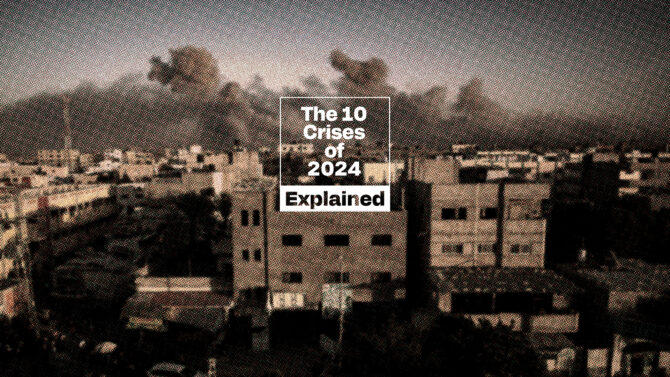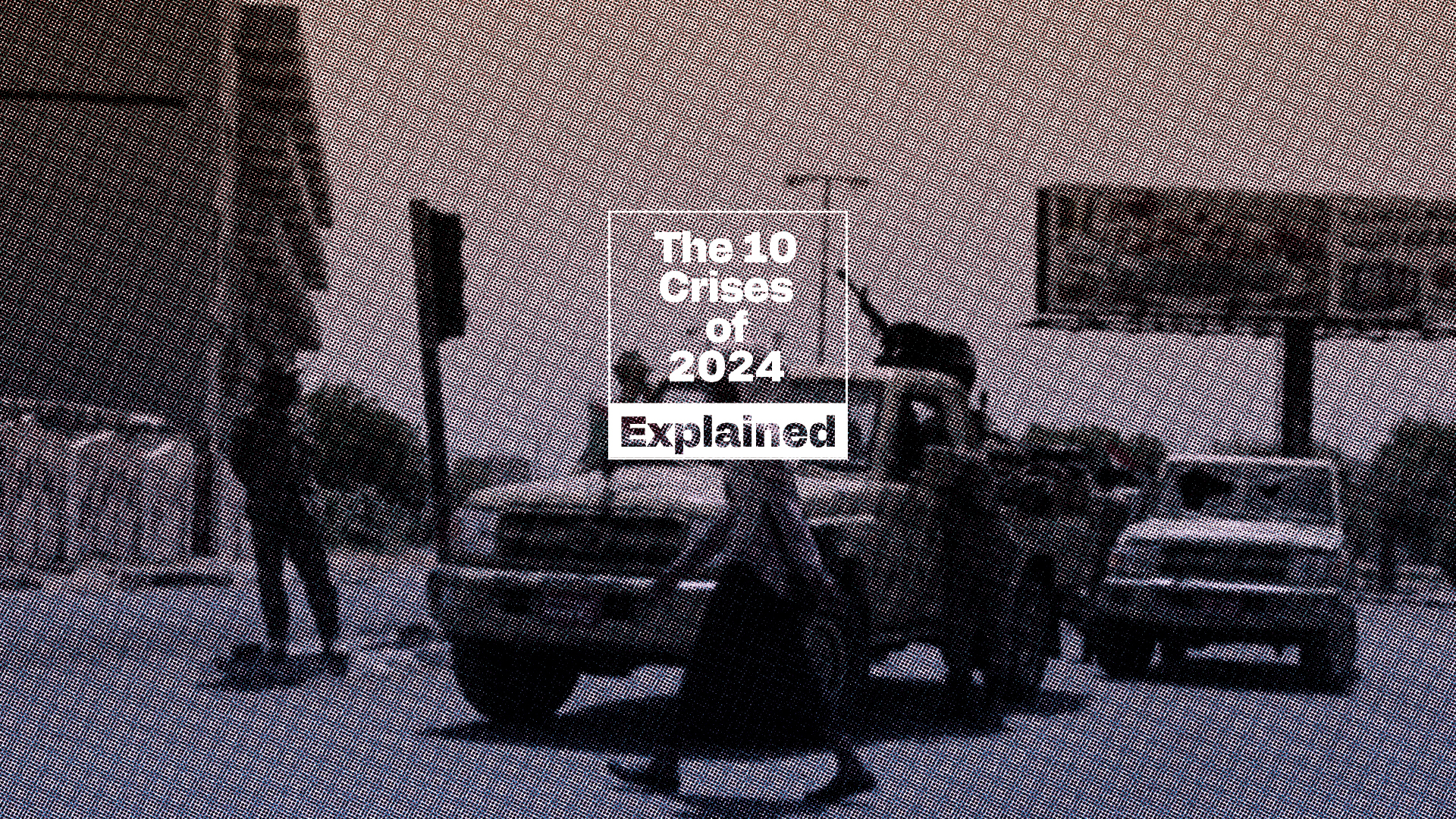April 15, 2024, marked one year since the start of the civil war in Sudan. Reflecting on this, Clementine Nkweta-Salami, the Resident and Humanitarian Coordinator for the region at OCHA, remarked that over the last year, Sudan “has become one of the world’s worst humanitarian tragedies in recent memory.” In the third installment of the series “The 10 Crises of 2024,” iMEdD analyses the war gripping Africa’s third-largest country, exploring its historical backdrop, key players, catastrophic repercussions, and the potential for peace.
2. Israel-Iran: Is War Spreading Across the Middle East?

The 10 crises of 2024 – Explained: 2. Israel-Iran: Is War Spreading Across the Middle East?
How did the war in Sudan start?
The beginning of the conflict in Sudan can be traced back to April 15, 2023, when armed hostilities erupted in the capital, Khartoum, between the Sudanese Armed Forces (SAF) and the Rapid Support Forces (RSF) paramilitary group. This outbreak of violence finds its roots in the longstanding internal turmoil of preceding years. The initial catalyst occurred in 2019 with the overthrow of former Sudanese President Omar el-Bashir through a military coup. El-Bashir, who had seized power via a coup in 1989, is wanted by the International Criminal Court for crimes against humanity, war crimes, and genocide, primarily in the Darfur region of western Sudan. The key figures behind the 2019 coup were army general Abdel Fatah Al-Burhan and RSF leader, and former associate of Bashir, Mohamed Hamdan Dagalo, also known as Hemedti. Initially, the military was expected to govern alongside civilian authorities, but in 2021, General Burhan orchestrated a new military coup, seizing power independently. Since then, the military has governed in alliance with the RSF. However, power struggles and disputes over control of the country’s economic resources, particularly the gold mines, have fueled tensions. The disagreement regarding the integration of the RSF into the official Sudanese army (SAF) resulted in fighting between the two factions in April 2023.
Who are the key players?
The key players in the conflict are the Sudanese Armed Forces (SAF), boasting an estimated manpower of around 200,000 troops, and the Rapid Support Forces (RSF), with an estimated combat capacity of 70,000 to 100,000 personnel, led by Abdel Fatah Al-Burhan and Mohamed Dagalo respectively. However, they are not operating in isolation. Over the course of the war’s first year, numerous militias and armed groups have emerged, aligning themselves with either side. Furthermore, according to various analyses, it seems that foreign involvement has transformed Sudan into an arena for regional proxy conflict. Egypt supports the official army, reportedly armed with drones by Iran. On the other hand, the United Arab Emirates and Ethiopia seem to be backing the RSF. There are also reports of Wagner mercenaries fighting alongside the RSF, prompting members of the Ukrainian Special Forces to join the Sudanese Armed Forces.
Why does the conflict hold geopolitical significance?
According to an analysis by Chatham House, the conflict in Sudan “has the potential to destabilise already fragile neighbouring countries, create large new migration flows to Europe, and attract extremist groups.” Zeinab Badawi, President of the School of Oriental and African Studies, University of London, echoed similar concerns in a recent interview, highlighting Sudan’s border with seven countries and warning that its continued destabilisation could escalate into a broader crisis in the Northeast Africa region. Furthermore, Sudan is intersected by the Nile River, has access to the strategically important Red Sea, and possesses rich mineral reserves, including oil and gold, the latter reportedly being used by Russia to fund its war efforts in Ukraine.
What is the situation in the country?
According to data from OCHA, after one year of conflict, 25 million people need humanitarian assistance and support, with 14 million of them being children. Additionally, 8.6 million individuals, constituting approximately 16% of the total population, have fled their homes, making Sudan, as per OCHA, the largest displacement crisis in the world. The UN World Food Programme cautions that there is a risk of the crisis in Sudan escalating into the world’s largest hunger crisis. Based on findings by the Food Programme, nearly 18 million people are acutely food insecure, of which nearly 5 million are in emergency levels of hunger. The data reveals that 90% of these individuals reside in areas with limited access to aid due to the ongoing conflict.
How will the conflict play out?
On April 15, 2024, diplomats from France, Germany, and the EU convened in Paris to discuss funding for humanitarian aid to Sudan. French President Emmanuel Macron announced €2 billion in humanitarian aid from France and its allies (Germany, the UK, and the US). On the military front, prospects for an end to the war appear increasingly remote, as the growing involvement of both domestic and international forces undermines any possibility of reaching a compromise or gaining control of the situation. This escalation heightens the risk of broader destabilisation in the region. Additionally, amidst global attention focused on conflicts in Gaza and Ukraine, there are concerns that Sudan could become a “forgotten crisis,” as noted by officials from the UN and the French Foreign Ministry at the Paris conference.
Read all the Explainer texts of the series “The 10 Crises of 2024” here.
